Environmental pollution refers to harmful chemicals and other contaminants that damage the natural environment. Some pollution can easily be seen. Examples include an open garbage dump or an automobile pouring out black smoke. However, pollution can also be invisible, odorless, and tasteless. Such forms of pollution do not obviously dirty the land, air, or water. But they reduce the quality of life for people and other living things. Noise pollution from traffic and machinery is one such example.
Environmental pollution is one of the most serious problems facing humanity and other life forms today. Badly polluted air can harm crops and cause life-threatening illnesses. Some air pollutants have reduced the capacity of the atmosphere to filter out the sun’s harmful ultraviolet radiation. Most scientists believe that these and other air pollutants have begun to change climates around the world. Water pollution and soil pollution threaten the ability of farmers to grow enough food. Ocean pollution endangers many marine organisms.
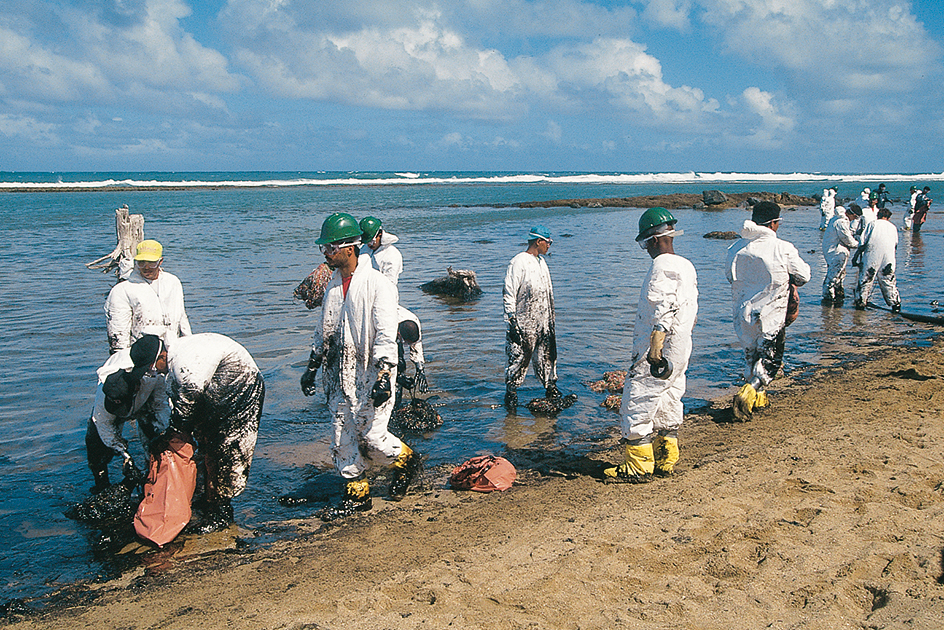
Many people think of air, water, and soil pollution as distinct forms of pollution. However, each part of the environment—air, water, or soil—is related to the others. All living and nonliving things in an environment interact to make up an ecosystem. All the ecosystems of Earth are connected. Thus, pollution that seems to affect only one part of the environment may also affect other parts. For example, sooty smoke from a power plant might appear to harm only the atmosphere. But rain can wash some harmful chemicals in the smoke out of the sky and onto land or into waterways.

Some pollution comes from one specific point or location, such as a sewage pipe spilling dirty water into a river. Such pollution is called point source pollution. Other pollution comes from large areas. Water can run off farmland and carry pesticides and fertilizers into rivers. Rain water can wash gasoline, oil, and salt from highways and parking lots into the wells that supply drinking water. Pollution that comes from such large areas is called nonpoint source pollution.
Most of the pollution that now threatens the health of our planet comes from products that many people want and need. For example, automobiles provide the convenience of personal transportation, but they create a large percentage of the world’s air pollution. Factories make products that people use and enjoy, but industrial processes can also pollute. Pesticides and fertilizers aid in growing large quantities of food, but they also poison the soil and water.
To end or greatly decrease pollution, people would need to reduce their use of polluting cars and other modern conveniences. Some factories might have to close or change production methods. Because many jobs are dependent on industries that contribute to environmental pollution, shutting down these industries would potentially increase unemployment. In addition, if farmers suddenly stopped using chemical fertilizers and pesticides, there might be less food available to feed people.
Over time, however, pollution can be reduced in many ways without seriously disrupting people’s lives. For example, governments can pass laws that encourage businesses to adopt less-polluting methods of operation. Scientists and engineers can develop products and processes that are cleaner and safer for the environment. And individuals around the world can themselves find ways to reduce environmental pollution.
Types of pollution
The chief types of environmental pollution include air pollution, water pollution, soil pollution, pollution caused by solid waste and hazardous waste, and noise pollution.
Air pollution
is the contamination of the air by such substances as fuel exhaust and smoke. It can harm the health of plants and animals and damage buildings and other structures. It can potentially cause a change in the worldwide climate. Air pollution also causes a variety of health problems, such as asthma and other lung diseases and coronary artery disease. According to the World Health Organization, about 3 million people die each year as a result of air pollution.
The atmosphere normally consists of nitrogen, oxygen, and small amounts of carbon dioxide and other gases and particulates (tiny particles of liquid or solid matter). A number of natural processes work to keep the parts of the atmosphere in balance. For example, plants use carbon dioxide and produce oxygen, in a process called photosynthesis. Animals, in turn, use up oxygen and produce carbon dioxide through respiration. Forest fires and volcanic eruptions shoot gases and particulates into the atmosphere. Over time, rain and wind can wash them out or scatter them.
Air pollution occurs when industries and vehicles release such large amounts of gas and particulates into the air that natural processes can no longer keep the atmosphere in balance. There are two chief types of air pollution: (1) outdoor and (2) indoor.
Outdoor air pollution.
Each year, hundreds of millions of tons of gases and particulates pour into the atmosphere. Most of this pollution results from the burning of fuel to power motor vehicles and to heat buildings. Some air pollution also comes from business and industrial processes. The burning of garbage may discharge smoke and heavy metals, such as lead and mercury, into the atmosphere. Most heavy metals are highly poisonous.
One of the most common types of outdoor air pollution is smog. Smog is a brown, hazy mixture of gases and particulates. It develops when certain gases released by the combustion of gasoline and other petroleum products react with sunlight in the atmosphere. This reaction creates hundreds of harmful chemicals.
One of the chemicals in smog is a toxic form of oxygen called ozone. Exposure to high concentrations of ozone causes headaches, burning eyes, and irritation of the respiratory tract in many individuals. In some cases, ozone in the lower atmosphere can cause death. Ozone can also damage plant life and even kill trees.
Particulates also contribute to air pollution. Some particles of fossil fuels escape from boilers in factories and from engines in cars and trucks when fuels do not burn completely. These particles pollute in many ways. They fall onto vegetation and the surfaces of buildings. Particulates can mix with other chemicals to create smog. They can also enter people’s lungs and contribute to the development of asthma or other diseases.
Acid rain is a term for rain and other precipitation that is polluted mainly by sulfuric acid and nitric acid. These acids form when gases called sulfur dioxide and nitrogen oxides react with water vapor in the air. A major source of both gases is the burning of coal, gas, and oil by cars, factories, and power plants. Because rain storms often affect large areas, acid rain can harm large areas of the environment. Acid rain has killed entire fish populations in a number of lakes. It has also damaged many buildings, bridges, and statues. Scientists believe high concentrations of acid rain can harm forests and soil. Regions affected by acid rain include large parts of eastern North America, Scandinavia, and central Europe.

Chemicals called chlorofluorocarbons (CFC’s) are pollutants that have been known to destroy the ozone layer in the upper atmosphere. CFC’s, now banned, were used as refrigerants in air conditioners and refrigerators and to make plastic foam insulation. Ozone, the same gas that is a harmful pollutant in smog near the ground, forms a protective layer in the upper atmosphere. It shields Earth’s surface from more than 95 percent of the sun’s ultraviolet radiation. CFC’s thinned the ozone layer and allowed more ultraviolet radiation to reach the surface of Earth. Overexposure to such radiation damages plants and greatly increases people’s risk of skin cancer.
The greenhouse effect is the warming that results when Earth’s atmosphere traps the sun’s heat. Certain gases, called greenhouse gases, let the sun’s energy through to reach Earth’s surface, but prevent heat from leaving—much like the glass walls of a greenhouse. Carbon dioxide and methane are major greenhouse gases.
Fuel burning and other human activities increase the amount of greenhouse gases in the atmosphere. Many scientists believe such an increase is intensifying the greenhouse effect and raising temperatures worldwide. The increase in temperature, called global warming, may cause many problems. A strong greenhouse effect could melt glaciers and Arctic ice, flooding coastal areas. It could also shift rainfall patterns, leading to more droughts. In addition, global warming may lead to more extreme weather conditions.
Indoor air pollution
occurs when buildings with poorly designed ventilation trap pollutants inside. Indoor pollutants include tobacco smoke, gases from stoves and furnaces, household chemicals, small fiber particles, and hazardous fumes given off by such building materials as insulation, glue, and paint. In some office buildings, significant amounts of these substances cause headaches, eye irritation, and other health problems in workers. Such health problems are sometimes called sick building syndrome.
Radon, a radioactive gas given off through the decay of uranium in rocks within Earth, is another harmful indoor pollutant. It can cause lung cancer if inhaled in large quantities. People can be exposed to radon when the gas leaks into basements of homes built over radioactive soil or rock. Energy-efficient buildings, designed to keep in heated or cooled air, can trap radon indoors and lead to high concentrations of the gas.
Water pollution
is the contamination of water by sewage, toxic chemicals, metals, oils, or other substances. It can affect rivers, lakes, and oceans, as well as the water beneath Earth’s surface, called ground water. Water pollution can harm many species of plants and animals. According to the World Health Organization, nearly one-sixth of the world’s people have no access to safe drinking water.
In a healthy water system, a cycle of natural processes turns wastes into useful or harmless substances. The cycle begins when organisms called aerobic bacteria use the oxygen dissolved in water to digest wastes. This digestion process releases nitrates, phosphates, and other nutrients (chemical substances that living things need for growth). Algae and aquatic green plants absorb these nutrients. Microscopic animals called zooplankton eat the algae, and small fish eat the zooplankton. These fish, in turn, may be eaten by larger fish, birds, or other animals. These larger animals produce body wastes and eventually die. Bacteria break down dead animals and animal wastes, and the cycle begins again.
Water pollution comes from businesses, farms, homes, industries, and other sources. It includes sewage, industrial chemicals, agricultural chemicals, and livestock wastes. Water pollution occurs when people put so much waste into a water system that its natural cleansing processes cannot function properly. Some waste, such as oil, industrial acids, or farm pesticides, poisons aquatic plants and animals. Chemical and oil spills can cause devastating water pollution that kills water birds, shellfish, and other wildlife. Other waste, such as phosphate detergents, chemical fertilizers, and animal manure, pollutes by supplying excess nutrients for aquatic life. This pollution process is called eutrophication. It begins when large amounts of nutrients flow into a water system. These nutrients stimulate excessive growth of algae. As more algae grow, more also die. Bacteria that consume the dead algae use up large amounts of oxygen dissolved in the water. The oxygen level of the water then drops, causing many aquatic plants and animals to die.
Another form of water pollution is the clean but heated water discharged by power plants into waterways. Such thermal pollution harms fish and aquatic plants by reducing the amount of oxygen in the water. It may also affect fish that rely on seasonal temperature changes to locate their breeding grounds.
Some water pollution occurs when wastewater is improperly separated from clean drinking water. In parts of the world that lack modern sewage treatment plants, water carrying human waste can flow into drinking water supplies. Disease-carrying bacteria in the waste can then contaminate the drinking water and cause such illnesses as cholera and dysentery. In areas with good sanitation, most human waste flows through underground pipes to special treatment plants that kill the harmful bacteria and remove the solid waste.
Water pollution also occurs when chemicals seep through the ground and enter aquifers, areas where ground water is stored in porous rock. Such pollution is of major concern because aquifers supply much of the drinking water and water for farms in some areas. The lack of oxygen in aquifers stops bacteria from breaking down contaminants, and the isolation of aquifers underground makes it difficult to locate and remove pollutants from them. Thus, chemicals that enter ground water can remain there for long periods and continue to contaminate local water supplies.
Soil pollution
is the destruction of Earth’s thin layer of healthy, productive soil, where much of our food is grown. Without fertile soil, farmers could not grow enough food to support the world’s people.
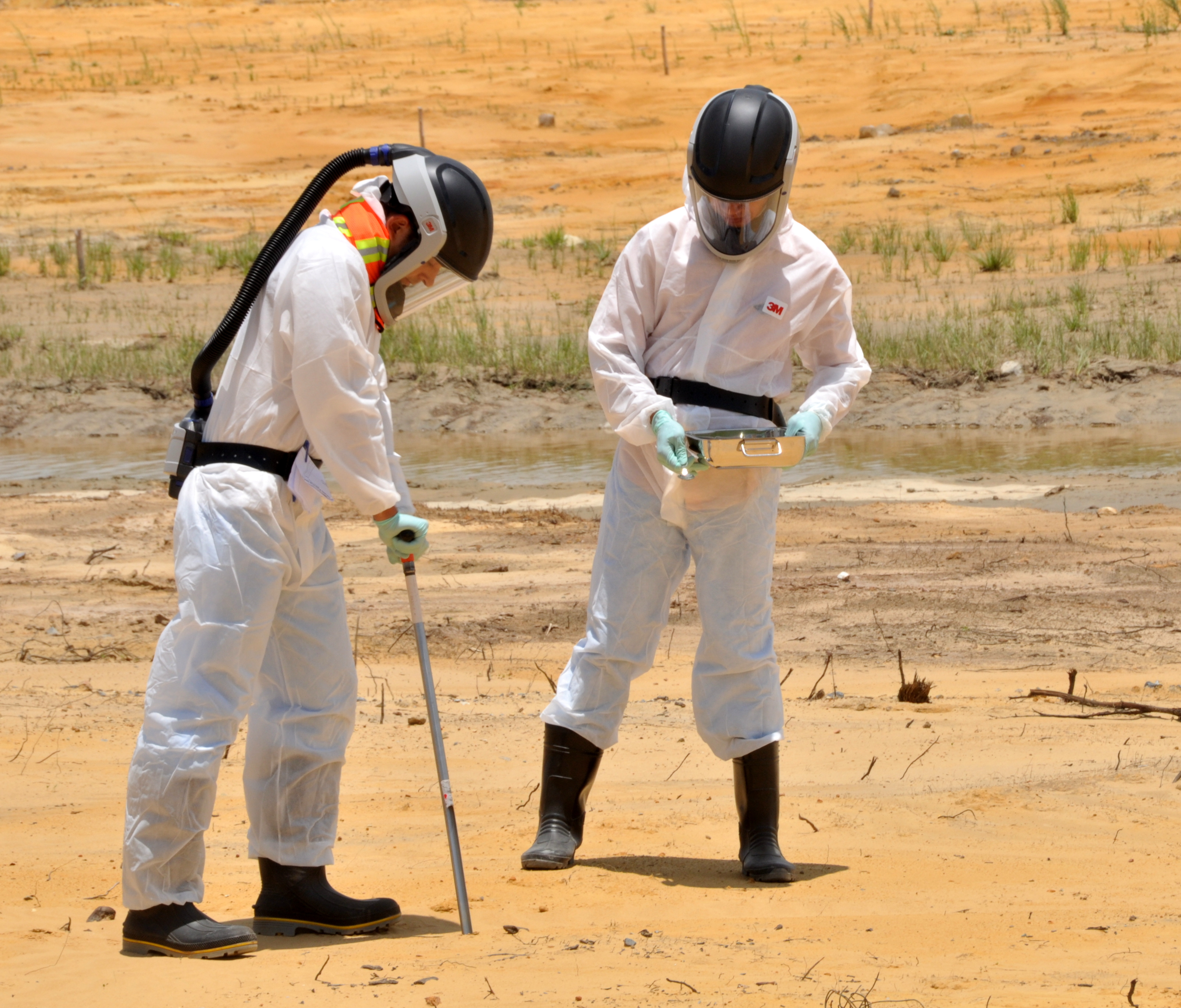
Healthy soil depends on bacteria, fungi, and small animals to break down wastes in the soil and release nutrients. These nutrients help plants grow. However, fertilizers and pesticides can limit the ability of soil organisms to process wastes. As a result, farmers who overuse fertilizers and pesticides can destroy the soil’s productivity.
Soil can be damaged in other ways. When soil is irrigated in dry areas with poor drainage, standing water may remain in fields. When this standing water evaporates, it leaves salt deposits behind, making the soil too salty for growing crops. Mining operations and smelters contaminate soil with toxic heavy metals. Many scientists believe acid rain can also reduce soil fertility.
Solid waste
is probably the most visible form of pollution. Every year, people dispose of billions of tons of solid garbage. Industrial wastes account for the majority of the discarded material. Solid waste from homes, offices, and stores is called municipal solid waste. It includes paper, plastic, glass, metal cans, food scraps, and yard trimmings. Other waste consists of junked automobiles, scrap metal, leftover materials from agricultural processes, and mining wastes known as spoil.
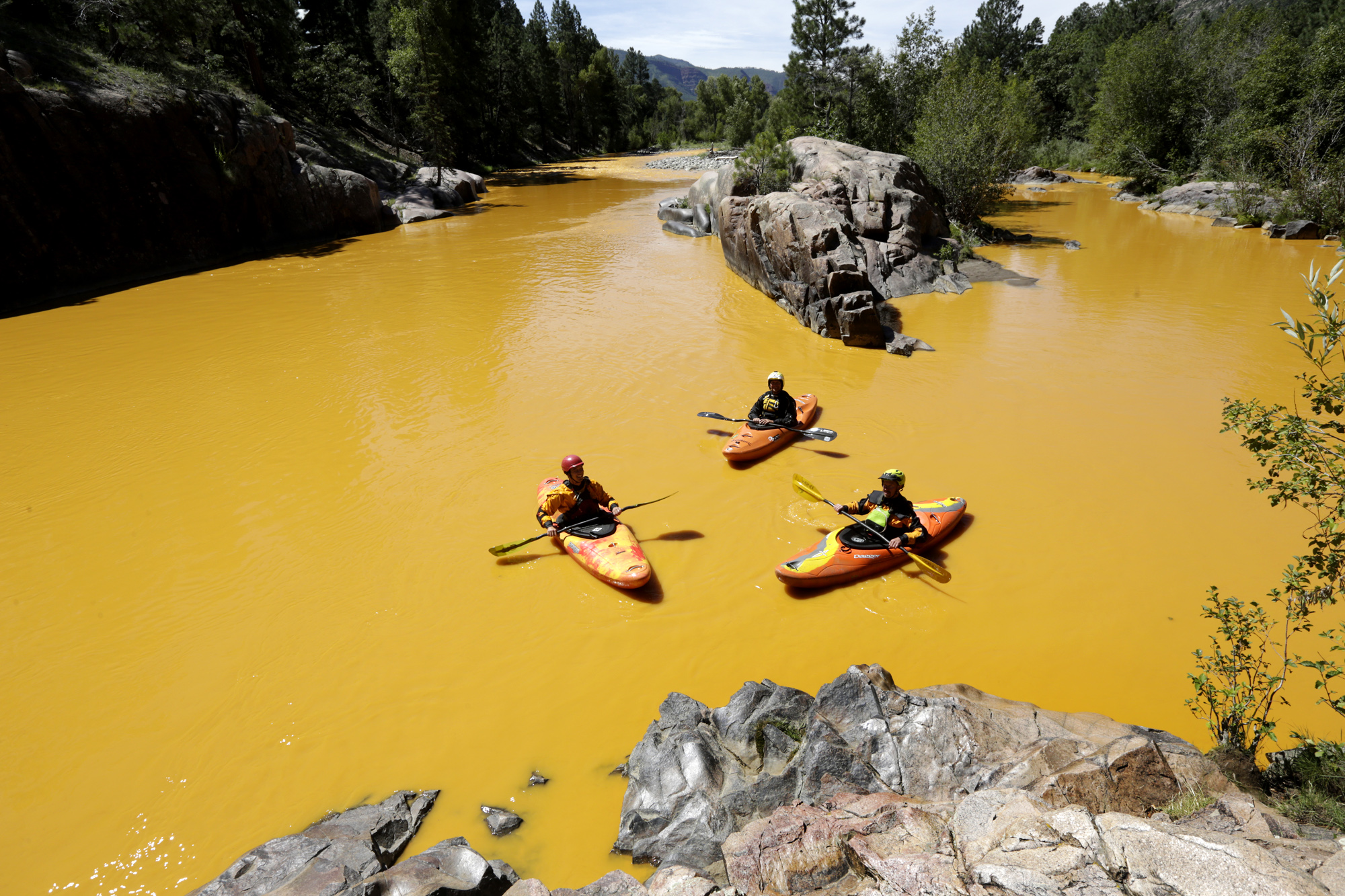
The handling of solid waste is a problem because most disposal methods damage the environment. Open dumps ruin the natural beauty of the land and provide a home for rats and other disease-carrying animals. Both open dumps and landfills (areas of buried wastes) may contain toxins that seep into ground water or flow into streams and lakes. The uncontrolled burning of solid waste creates smoke and other air pollution. Even burning waste in incinerators can release toxic chemicals, ash, and harmful metals into the air.
Hazardous waste
is composed of discarded substances that can threaten human health and the environment. A waste is hazardous if it corrodes (wears away) other materials; explodes; ignites easily; reacts strongly with water; or is toxic. Sources of hazardous waste include industries, hospitals, and laboratories. Such waste can cause immediate injury when people breathe, swallow, or touch it. When buried in the ground or left in open dumps, some hazardous waste can contaminate air and ground water. Because chemicals can be taken into plants through their roots, hazardous waste can contaminate food crops.
The mishandling or accidental release of hazardous waste has caused a number of disasters around the world. For example, in 1978, hazardous chemicals leaking from a waste disposal site in the Love Canal area of western New York threatened the health of nearby residents. Hundreds of people were forced to abandon their homes. In 1984, a leak of poisonous gas from a pesticide plant in Bhopal, India, killed about 3,000 people and caused serious injuries to about 50,000 (see Bhopal disaster).
Some hazardous waste can seriously harm the health of people, wildlife, and plants. These pollutants include radiation, pesticides, and heavy metals.
Radiation
is an invisible pollutant that can contaminate any part of the environment. Most radiation comes from natural sources, such as minerals and the sun’s rays. Scientists can also produce radioactive elements in their laboratories. Exposure to large amounts of radiation can harm cells and result in cancer.
Radioactive waste produced by nuclear reactors and weapons factories poses a potentially serious environmental problem. Some of this waste will remain radioactive, giving off harmful radiation, for thousands of years. The safe storage of radioactive waste is both difficult and expensive.
Pesticides
are used to protect plants from weeds, insects, and other unwanted pests. However, they can travel great distances through the environment. When sprayed on crops or in gardens, pesticides can be blown by the wind to other areas. They can also flow with rain water into nearby streams or can seep through the soil into ground water. Some pesticides can remain in the environment for many years and pass from one organism to another. For example, when pesticides are present in a stream, small fish and other organisms can absorb them. Larger fish who eat these contaminated organisms build up even larger amounts of pesticides in their flesh. This process is called bioaccumulation.
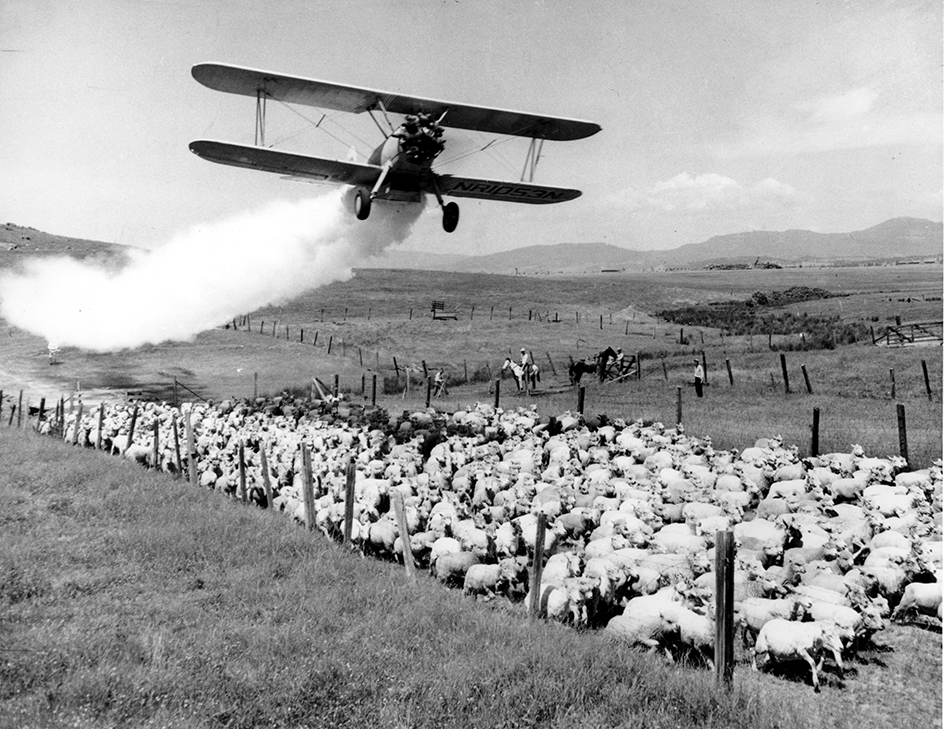
Heavy metals
include cadmium, mercury, and lead. Mining operations, solid waste incinerators, industrial processes, and motor vehicles can all release heavy metals into the environment. Coal-burning power plants can release mercury. Like pesticides, heavy metals are long lasting and can spread through the environment. Also, like pesticides, they can collect in the bones and other tissues of animals. In human beings, heavy metals can damage bones, various internal organs, and the nervous system. Many can also cause cancer.
Noise pollution
comes from such machines as airplanes, motor vehicles, construction machinery, and industrial equipment. Noise does not dirty the air, water, or land, but it can cause discomfort, anxiety, and hearing loss in human beings and other animals.
Controlling pollution
Controlling pollution depends on the efforts of governments, scientists, business and industry, agriculture, environmental organizations, and individuals.
Government action.
In many countries around the world, governments work to help clean up pollution. Such environmental efforts come from both local and national governments, but they also depend on international cooperation. A number of international groups have been established to protect Earth’s resources.
Local efforts.
Many local governments have enacted laws to help clean up the environment. For example, in 1989, California adopted a 20-year plan to reduce air pollution in the Los Angeles area, which had the worst air quality in the United States. The plan introduced measures to restrict the use of gasoline-powered vehicles and to encourage the use of mass transportation.
Loading the player...Paper recycling
National efforts.
Most countries have national pollution control agencies. In the United States, for example, the Environmental Protection Agency (EPA) sets and enforces pollution control standards. It also assists state and local governments with pollution control.
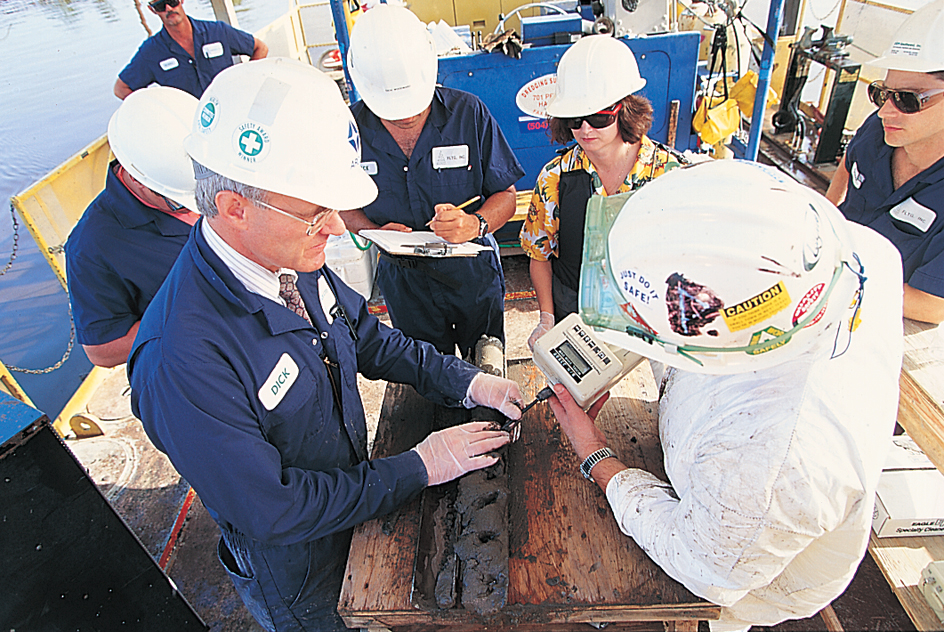
Many national governments pass legislation to help limit and prevent pollution. Some pollution control laws limit or ban the release of pollutants into the environment. In the United States, the Clean Water Act of 1972 and its amendments have reduced the discharge of untreated water and harmful chemicals into rivers and other waterways. The Clean Air Act of 1970 and the Clean Air Act Amendments of 1990 restrict the release of hazardous air pollutants and require measures to control the release of common pollutants such as those that make up urban smog. The Resource Conservation and Recovery Act of 1976 requires that hazardous wastes be specially treated before disposal. The act also requires landfills to be constructed with double liners and collection systems to prevent hazardous chemicals from entering water supplies.
Some pollution prevention laws require that polluters be issued an emission permit. Such a permit limits the amount of a pollutant a facility can legally release. The Clean Water Act of 1972 requires facilities releasing pollutants into surface water to do so within the limits of a permit. If a facility releases pollutants without a permit or above the limits of its permit, it may receive a fine or be shut down.
Other laws are designed to clean up pollution. In 1980, for example, the U.S. Congress enacted the Comprehensive Environmental Response, Compensation, and Liability Act. This act, also known as “Superfund,” began a government cleanup of hazardous waste dumps in the United States. This law and others hold polluters responsible for repairing the environmental damage they cause.
National governments may also levy taxes on the release of pollutants or substances that create pollution. Beginning in 1990, the United States imposed taxes on the use of CFC’s to help phase out their production. High taxes gave companies an incentive to develop alternatives to CFC’s in their processes. By 1996, the production of CFC’s had ended in the United States. High gasoline taxes may encourage people to drive less, to carpool, and to use public transportation, thus reducing air pollution from automobiles.
The forces of a free market can be used to help control pollution. A national government may set a total amount of pollutant emissions allowed over all industries and permit companies to trade emissions credits. For example, 1990 amendments to the Clean Air Act established tradable emission credits for the release of sulfur dioxide from such major sources as power plants. A facility was allowed to release only as much sulfur dioxide as it had credits for. But it could buy credits from a facility whose emissions were so low that it had unused credits. To avoid buying emission credits, many power plant operators decided to burn cleaner fuels or to install pollution control devices.
Some government regulations simply require businesses to tell the public how many pollutants they release into the environment. This type of regulation has caused some companies to find ways to reduce pollution so that consumers do not develop an unfavorable impression of them and perhaps refuse to purchase their products. The Emergency Planning and Community Right-to-Know Act, established in the United States in 1986, is an example of such a regulation.
Global efforts.
Pollutants often move across national boundaries. In addition, much pollution occurs in Earth’s oceans and atmosphere, which do not belong to any nation or individual. For these reasons, the people of the world must work together to control pollution.
Since the 1970’s, representatives of many nations have entered into environmental treaties. The treaties aim to control such problems as acid rain, the thinning of the ozone layer, and the dumping of waste into oceans.
In 1992, representatives of member countries of the United Nations (UN) met in Rio de Janeiro, Brazil, for the UN Conference on Environment and Development, also known as the Earth Summit. UN members signed agreements on the prevention of global warming, the preservation of forests and endangered species, and other issues. In 2002, UN countries met for the World Summit on Sustainable Development, in Johannesburg, South Africa. At that meeting, UN members committed themselves to reversing environmental damage. They set target dates by which to complete the restoration of depleted fisheries and to end the production of certain hazardous chemicals.
In 2001, 127 countries formed a treaty to ban or phase out the use of 12 persistent organic pollutants (POP’s). These chemicals, which include the pesticide DDT, are carried across national boundaries by air and water, and they threaten the health of human beings and other animals. The treaty significantly reduced the presence of POP’s in the environment.
Scientific efforts.
Increasing concern over environmental protection has caused scientists and engineers to look for technological solutions. Some research seeks ways to clean up or manage pollution. The goal of other research is to prevent pollution. Many industrial researchers are finding more economical ways to use fuels and other raw materials. As a result, some European cities now use waste heat from power plants or trash incinerators to warm homes. New automobile engines burn gasoline much more cleanly and efficiently than older engines. Researchers have also developed automobiles that can use natural gas, which burns more cleanly than does gasoline. In Brazil, some cars use a type of alcohol called ethanol as fuel. Scientists are also developing cars that can use hydrogen gas as fuel. Hydrogen creates almost no pollution when it is burned. In addition, an increasing number of cars use electric batteries in addition to—or instead of—fuel-burning engines.
Scientists and engineers are also researching ways to generate electric power more cheaply from renewable energy sources, such as the wind and the sun, causing little or no pollution. Large fields of wind turbines, known as wind farms, supply about 5 percent of California’s electric power and more than 12 percent of Germany’s. Devices called photovoltaic cells convert sunlight directly into electric power. Using such cells, a photovoltaic power plant in Sacramento, California, produces enough power for 1,000 homes.
Business and industry.
Many companies have discovered that it makes good business sense to pollute less. Some have found that reducing pollution gives them a better public image and saves money. Others have developed environmentally safe products or packaging to satisfy consumer demands. Still others develop pollution control systems because they believe that laws will eventually force them to do so anyway. Some companies limit pollution merely because the people running them choose to do so.
In the past, waste disposal was relatively inexpensive for most businesses. Today, however, legal waste disposal sites have become increasingly scarce in many areas. Regulation of certain types of waste has made their continued production extremely costly. As a result, many businesses have found ways to produce less waste or to recycle materials that they use. Manufacturers may use a minimum of packaging and choose packing materials that can be recycled. Lighter and less bulky packaging means distributors use less fuel transporting the products. In addition, the consumer throws out less packaging and creates less garbage.
Many businesses specialize in different types of pollution management. For example, some pollution management firms develop devices that remove harmful particulates from smokestack emissions. Particulates can be captured by filters, by traps that use static electricity, or by devices called scrubbers that wash out particulates with chemical sprays.
Other businesses assist companies in following government orders to clean up pollution. Some firms manage recycling or energy conservation programs. Still others help businesses develop less-polluting processes.
Regardless of why or how industries begin to clean up pollution, it is a slow, expensive process. Many businesses rely on the cheapest production methods available, even though such methods pollute. If the cost of cleaning up the pollution created by current production methods is added to manufacturing costs, however, methods that pollute less may prove more economical.
Some businesses work together to reduce their pollution. Waste materials from one industry can be used as a raw material by another industry. For example, a power plant in Kalundborg, Denmark, sells gypsum captured from burning fossil fuels to a nearby wallboard factory. It also sells ash to a cement manufacturer and steam to other nearby factories and homeowners. By sharing materials, industries can reduce pollution and waste while profiting from the exchange of resources. A field of study called industrial ecology explores these and similar opportunities related to reducing the impact on the environment from industrial and economic sources.
Agriculture.
Scientists and farmers are developing ways to grow food that require less fertilizer and pesticides. Many farmers rotate their crops from year to year to reduce the need for chemical fertilizers. The rotation of corn, wheat, and other crops with legumes, such as alfalfa and soybeans, helps replace nitrogen lost from the soil. Crop rotation also helps control pests and plant diseases. Some farmers use compost and other fertilizers that are less harmful to the soil. Instead of spraying their crops with harmful pesticides, some farmers combat damaging insects by releasing other insects or bacteria that prey upon the pests. Scientists are also developing genetically engineered plants that are resistant to certain pests.
The rotation of crops and the use of natural pest enemies are called natural pest control. Combining a limited use of chemical pesticides with natural controls is known as integrated pest management (IPM). Farmers using IPM apply chemical pesticides in smaller amounts and only when they will have the most effect.
Environmental organizations
attempt to help control pollution by working to influence lawmakers and elect political leaders who care about the environment. Some groups raise money to buy land and protect it from development. Other groups study the effects of pollution on the environment and develop systems for pollution prevention and management. Such groups use their findings to persuade government and industry to prevent or reduce pollution. Environmental organizations also publish materials to persuade people to prevent pollution.
Political parties representing environmental concerns have formed in many industrial nations. These organizations, often known as Green parties, have had a growing influence on environmental policies. Countries with active Green parties include Australia, Austria, Germany, Finland, France, New Zealand, Spain, and Sweden.
Individual efforts.
One of the most important ways an individual can reduce pollution is by conserving energy. Conserving energy reduces the air pollution created by power plants. Reduced demand for oil and coal might also result in fewer oil spills and less destruction of coal-bearing lands. Driving less is one of the best ways to save energy and avoid polluting the air.
Using more efficient light bulbs and home appliances conserves electric power. For example, a compact fluorescent lamp (CFL) or light-emitting diode (LED) uses a fraction of the electric power that is used by a traditional incandescent bulb. People can also conserve by using appliances less often, by turning off appliances and lights when not in use, and by setting home thermostats at or below 68 °F (20 °C) in winter and at or above 78 °F (26 °C) in summer. Buildings with specially treated windows and good insulation need less fuel or electric power to heat or cool than buildings without such materials.
People can also buy products that are safe for the environment. For example, households can help reduce water pollution by using fewer toxic cleaning products and by properly disposing of any toxic products they do use. If consumers refuse to purchase harmful products, manufacturers will stop making them.
Many cities and towns have recycling programs. Recycling saves energy and raw materials, and it prevents pollution. Many different waste products can be recycled. Commonly recycled wastes include metal cans, glass, paper, plastic containers, and old tires. Cans can be melted and used to make new ones. Glass can be ground up and made into new containers or used as a substitute for sand in road pavement. Paper can be reprocessed into different paper products. Plastics can be melted and re-formed into plastic lumber for such uses as fences, decks, and benches. They can also be reused to make carpeting. Old tires can be ground up and added to asphalt or some other adhesive to make roadbeds or such molded products as floor mats and playground equipment.
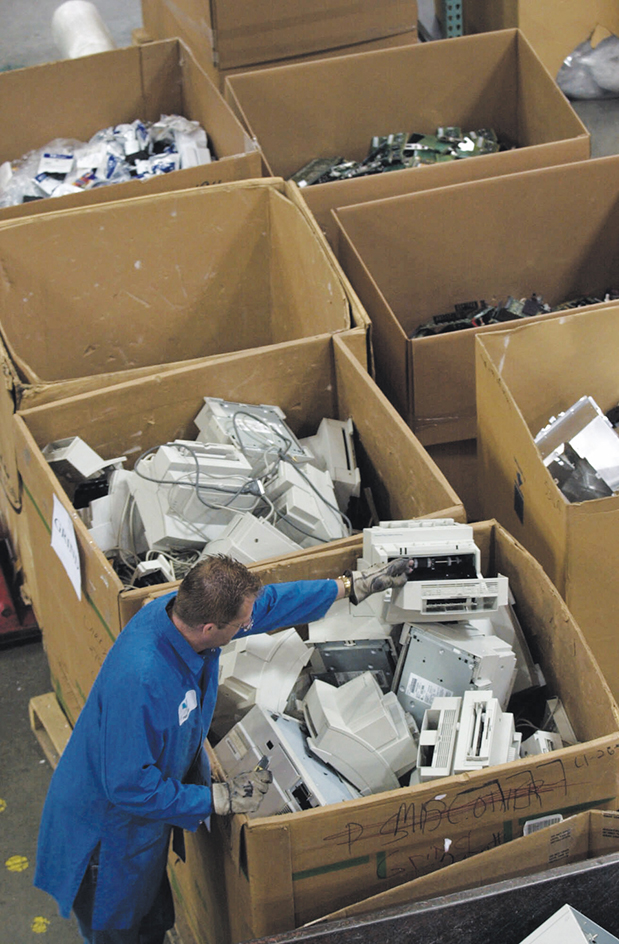
The most important way people can fight pollution is to learn as much as possible about how their actions affect the environment. Then they can make intelligent choices that will reduce damage to the planet.
Loading the player...
Aluminum recycling
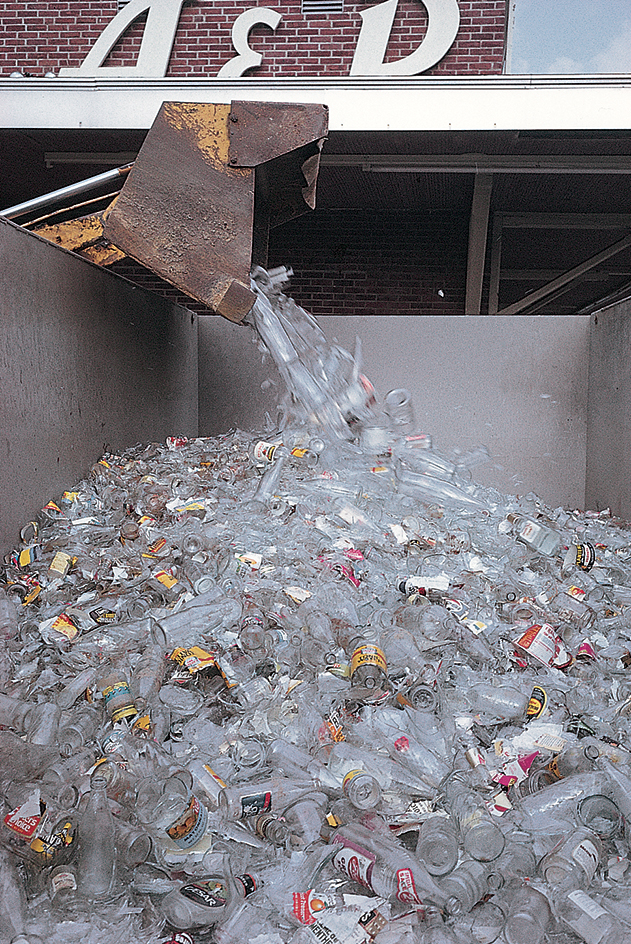
History
Human beings have always caused some environmental pollution. Since prehistoric times, people have created waste. Like garbage today, this waste was either burned, tossed into waterways, buried, or dumped aboveground. However, the waste of early peoples was mostly food scraps and other substances that broke down easily by natural decay processes. Prehistoric populations were also much smaller and were spread out over large areas. As a result, pollution was less concentrated and caused few problems.
The growth of pollution
started during ancient times when large numbers of people began living together in cities. As cities grew, pollution grew with them. Poor sanitation practices and contaminated water supplies unleashed massive epidemics in early cities. Environmental problems became even more serious and widespread in the 1800’s, during a period called the Industrial Revolution. This period was characterized by the development of factories and the overcrowding of cities with factory workers.
During the Industrial Revolution, coal powered most factories. Most city homes also relied on coal as a heating fuel. The burning of coal filled the air of London and other industrial cities with smoke and soot. Poor sanitation facilities also allowed raw sewage to get into water supplies in some cities. The polluted water caused typhoid fever and other illnesses.
In the United States, air pollution problems became particularly serious in the early 1900’s. By the 1930’s, smoke and soot from steel mills, power plants, railroads, and heating plants filled the air over many Eastern and Midwestern cities. In some industrial cities, such as Pittsburgh, Pennsylvania, and St. Louis, Missouri, pollution frequently became so thick that drivers needed streetlights and headlights to see during the day.
Progress in controlling pollution
has gained speed since the 1960’s. Nearly all the railroads, industries, and homes of western Europe and the United States have switched from coal to cleaner-burning fuels, such as oil and natural gas. In many other places, pollution controls effectively limit the air pollution created by coal burning. Today, cities in many parts of the world also treat their water and process their sewage, thus reducing the problems caused by harmful bacteria.
Important progress has been made in other areas of pollution management. Industrial waste, sewage, fertilizers, and other contaminants have polluted the Great Lakes since the mid-1800’s. By the early 1970’s, Lake Erie, Lake Ontario, and shallow regions of Lake Huron and Lake Michigan were so polluted that the waters had turned green and smelled foul, and huge fish kills were common. In 1972, Canada and the United States signed the Great Lakes Water Quality Agreement. Since then, local governments around the lakes have improved sewage treatment plants, controlled the runoff of chemical fertilizers from farms, and worked to reduce the use of phosphate detergents. They have also forced industries to reduce the pollutants they dump into the lakes. Today, the Great Lakes are much cleaner.
Current environmental issues
Current environmental issues include the need to weigh the benefits and risks of pollution controls, and the effects of population growth and of wastefulness in the industrialized world.
Weighing benefits and risks.
Increased concern about the environment has caused people to protest many products and practices. However, few choices are clear cut. It is often difficult to determine the relative risks and benefits to the environment of various products and practices. For example, nuclear power plants generate energy without creating air pollution. In this respect, nuclear power plants are safer for the environment than plants that burn coal, oil, or natural gas. But nuclear plants produce radioactive waste, which is difficult to dispose of safely. And the mining of uranium, a nuclear fuel, can pollute large areas of land and water. Business, environmental groups, and scientists work to determine which products, materials, and processes produce the most pollution.
When creating pollution laws, government officials must consider both the dangers of the pollutant and the possible financial effects of regulation. Regulations often require that an industry purchase pollution control devices, make costly production changes, or discontinue manufacturing certain products. These measures may be expensive, and many believe that such expenses might cause some businesses to fail, creating unemployment. As a result, the effects of certain proposed pollution laws could harm people more than the pollutant would. On the other hand, pollution control measures can also create jobs for the specialists required to implement them. In addition, consumers may be willing to absorb the additional costs of such measures, enabling affected industries to remain profitable.
Effect of population growth.
Despite progress in protecting the environment, the problem of pollution has become increasingly widespread and potentially more harmful. The main cause for the increase in pollution is that Earth’s population grows larger every day. More people means more waste of every kind. As a result, one of the most important ways to begin controlling environmental pollution is to slow population growth. A reduction in population growth would slow the destruction and give people more time to develop effective pollution control systems.
Most of the world’s population growth occurs in the poorest parts of the world, including certain nations in Africa, Asia, and Latin America. In these areas, people use what little resources they have just trying to keep alive. Governments in developing countries struggle to build modern industries and agricultural systems to provide a basic standard of living for their citizens. However, many developing countries use old technology that tends to pollute because they cannot afford modern, efficient machinery. Even if they could afford pollution controls, pollution in the developing world would continue to rise simply because these nations are industrializing. And more industry means more pollution.
Wastefulness in the industrialized world.
Many people in Japan and in wealthy North American and European nations have become accustomed to comfortable lifestyles that consume large amounts of energy and raw materials and produce many wastes. A person living in an industrialized nation uses about 10 times the amount of fossil fuels and electric power and produces 2 to 3 times as much municipal waste as a person in a developing country. For a true reduction in pollution, people in the industrialized world would probably have to accept less convenience and luxury in their lives. Solving the problems of global environmental pollution will require the cooperation of governments and industry in all countries, rich and poor, as well as the efforts of individuals all over the world.
